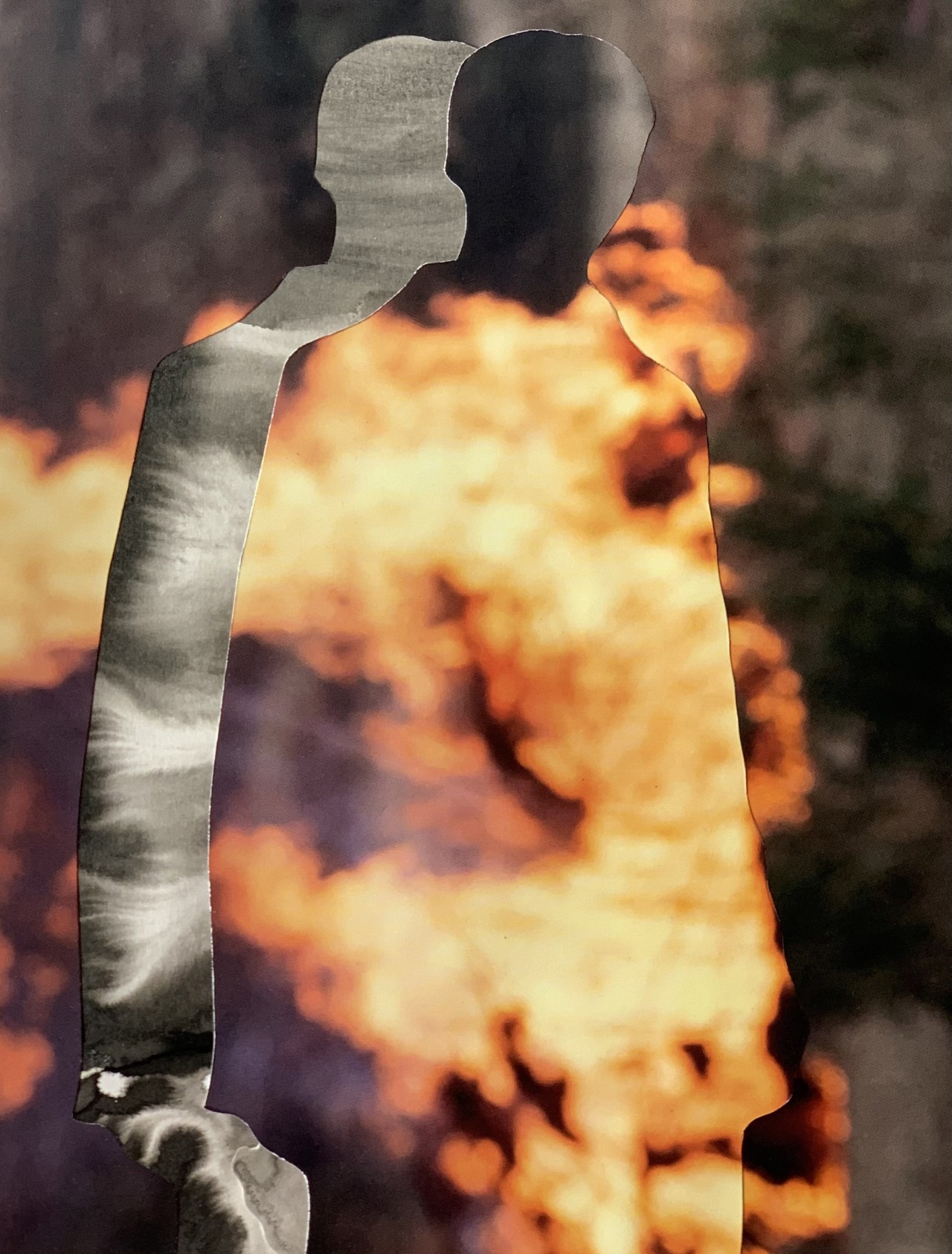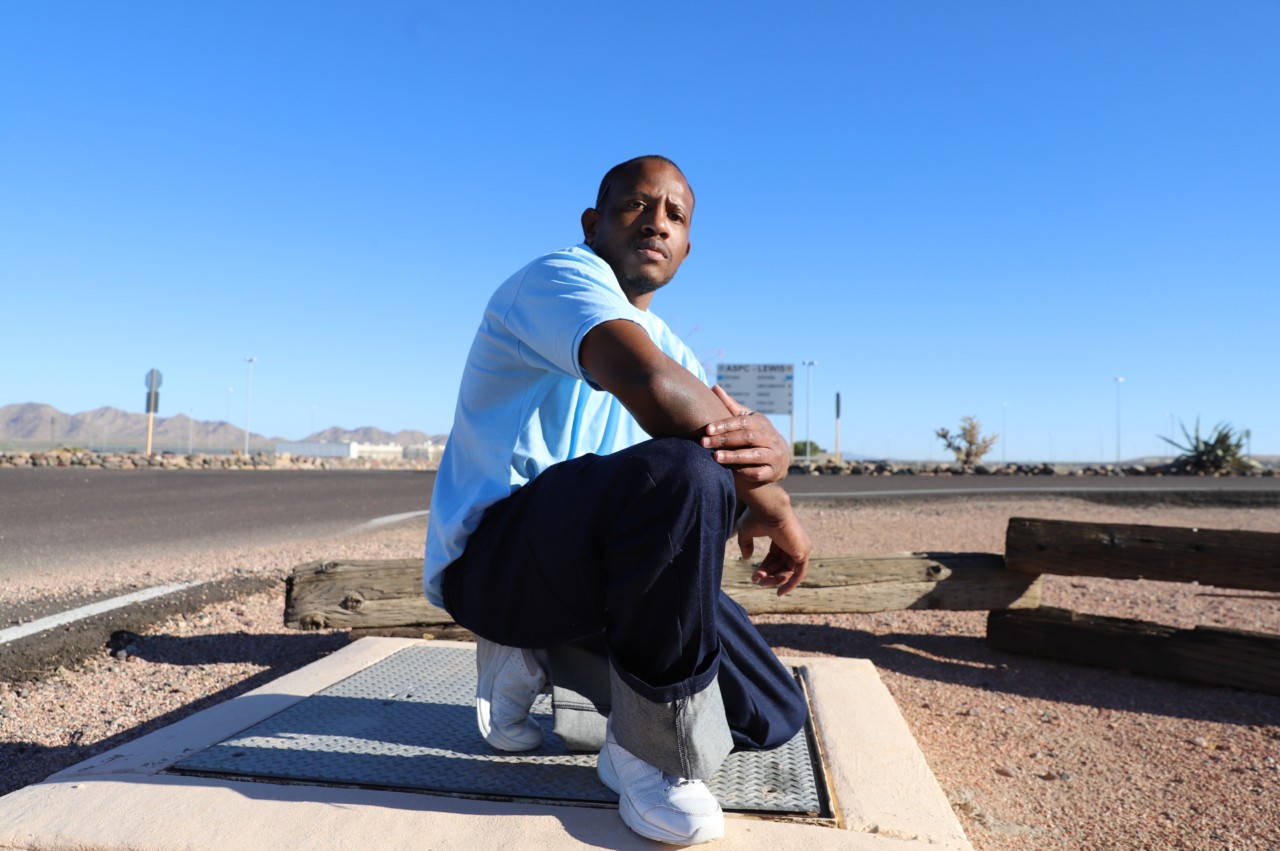

WORDS BY ALEX KRALES
Artwork by Yannick Lowery
Antoinette Newcomb, 65, or Toni as everyone calls her, grew up on a farm in rural Arizona, where she would paint toads to remember the names she gave them. She trained award-winning horses. She still laughs a lot, but now her humor has an edge. That’s because, as a young girl, Toni could never imagine that she would be where she is now: serving a life sentence without the possibility of parole in an Arizona state prison. “I wonder how much the state would charge for my body bag,” she wrote as we communicated through the prison’s email system.
It was hot that day, Newcomb wrote to me. Very hot. Over 100 degrees Fahrenheit. But Newcomb was used to hot nights.
The average summer temperature for Perryville, where Newcomb is incarcerated on the outskirts of Phoenix, is 108 degrees Fahrenheit in August. Even in the cells, triple-digit temperatures have become the norm. “The whole planet is too hot!!” she wrote.
Last summer, when temperatures approached an astonishing 120 degrees Fahrenheit in July, Newcomb’s only recourse was a single bag of ice and an open cell door to improve ventilation. She has been in prison for 16 years and has never had any air cooling systems for the brutal summer months or heating for the harsh winters. As she has gotten older, she worries that these grueling living conditions could affect her health and that of the other older women she is incarcerated with. Her blood pressure has continued to rise, and she lives in fear of dying from overheating or a related sickness like respiratory illness or heart attack.
Newcomb’s situation is not unusual. Amid the climate catastrophe that is raising temperatures to modern extremes, 13 of the hottest states in the U.S. still don’t provide cooling in prison. The country has no national standards for heating during the winter or air conditioning during the summer. With more than 1,155 state prisons, 122 federal prisons, 3,116 local jails, and juvenile and immigration detention centers that often lack both, the problem is deadly.
This is despite over 1,200 cases from 1980-2019 filed by incarcerated people and their advocates that argued that the exposure to extreme temperatures—high and low—violated the Eighth Amendment for cruel and unusual punishment. In one such case, Daniel Clay, who was incarcerated in upstate New York, alleged that during a severe heat wave, his unventilated cell “was like being locked in a car on a hot summer day.” A district court dismissed his motion.
13 of the hottest states in the U.S. still don’t provide cooling in prison.
“Environmental conditions can be a health challenge,” said Dr. Charles Lee, who works for the National Commission on Correctional Health Care (NCCHC) and has inspected 200 U.S. prisons, some of which were built in the 1800s before cooling technologies existed. He also worked in corrections as the medical director in a maximum security prison in California, but he does not see a problem with people being exposed to extreme temperatures. “It’s a prison. It’s not going to be comfortable.”
But according to a 2023 study led by epidemiologist Julianne Skarha, the temperature can go beyond uncomfortable. It’s often lethal.
Skarha, who was moved to action after witnessing the brutal working conditions of the incarcerated people who make license plates, analyzed 12,836 recorded deaths in prison during the summer months between 2000-2019. Of those, an estimated 4,479 people died from heat-related illness. That’s a conservative estimate, Skarha said. Due to a lack of transparency and reporting, she estimates that the true death toll is far higher.
Skarha’s study revealed that mortality increased with temperatures, extreme heat, and heat wave days—especially with complications related to heart disease. “When your body temperature starts to increase, that’s going to put a lot of stress on other functions,” she said.
That takes a heavy toll, especially on older people, whose aging bodies are less able to thermoregulate and whose medications might inhibit their ability to sweat. For example, even though older people over 55 years old constituted only 11.8% of the state and federal prison population in 2019, they accounted for 63.4% of the deaths in custody that summer. This staggering statistic is one reason the call to free older prisoners has crescendoed in recent years. They are little threat to society: According to a report by the U.S. Sentencing Commission, recidivism rates are extremely low for people over the age of 65.
“We are baking prisoners nationally,” said Laurie Levenson, a law professor at Loyola Marymount University. In a report about the threat climate change poses in U.S. prisons, Levenson warned institutions should have evacuation plans for incarcerated people facing extreme heat waves. “The tangible next step is that we should be doing an environmental assessment of every penal institution we have, and there should be set national standards, not set by each state.”
Prison guards are supposed to report on facility temperatures while checking on incarcerated people during mandatory rounds, but many avoid their duties due to poor working conditions. Absenteeism, where officers don’t report to work, is worsening nationwide. Understaffing makes jail and prison conditions more dangerous. Meanwhile, reporting on prison deaths is becoming obscured. Since Skarhas published her findings—the only report on national prison heat deaths to date—the Bureau of Statistics has stopped aggregating and publishing the data.
After a wave of complaints from families of incarcerated people, New Jersey hired Terry Schuster in 2022 to become its first ombudsman to improve state prison living conditions, including heat- and cold-related problems.
Older people over 55 years old constituted only 11.8% of the state and federal prison population in 2019, [yet] they accounted for 63.4% of the deaths in custody that summer.
“Lawmakers in New Jersey found that they couldn’t answer basic questions about what was happening inside their state prisons,” Schuster said. “When faced with abhorrent abuses in the women’s prison, they gave my office the mandate and funding to monitor and inspect facilities, investigate complaints, and report our findings and recommendations publicly.”
In places without these protections, however, incarcerated people turn to desperate measures. In September 2023, 100 people incarcerated at Minnesota’s Stillwater prison refused to return to their cells from the air-conditioned public room.
Others take the most extreme step of all: suicide. According to Skarha’s 2023 study, heat waves have been associated with a 22.8% increase in prison suicides over the past two decades.
Benjamin Lozano, 44, spent two of his 26 years incarcerated awaiting trial at Rikers Island in New York City—an institution where at least 21 people have committed suicide since 2012, with spikes during the summer, according to official records obtained by Atmos in a FOIL request.
“I was a younger man experiencing those temperatures and had difficulty breathing, let alone someone who’s in their 70s or 80s,” he said. Lozano, who graduated from the Bard Prison Initiative and now works with the underserved as a gang intervention specialist, describes the notorious jail as “Hell on Earth.” With temperatures regularly exceeding 90 degrees Fahrenheit, he remembers how the guards would squeeze 50 people into a cell only made to hold 15, creating what inmates called “the bullpen.”
“That makes conditions worse, bodies on top of each other. It gets hot. I would lay on the ground, try to get as close to the ground as you can. And that was also a problem because now you have to deal with the roaches, and you have to deal with the rodents that will literally just crawl all over you,” he said.
Over 2,000 miles away in Arizona, 35-year-old Timothy Jones, knows exactly what Lozano is talking about. Jones was incarcerated for 10 years in Arizona before being released in 2023. During his time in prison, he battled the heat on a daily basis. He said that scorching temperatures, in part, led to constant migraines and up to two seizures a week. He was allowed early morning showers to stay cool, but he said they weren’t enough.

“It’s hotter than the devil’s toenails in here. The sweat is pouring off my hands.”
“It’s hotter than the devil’s toenails in here,” he told me over the phone as he stood in the prison yard on a hot September day. “The sweat is pouring off my hands.” He soon ended the call because he was so dizzy, he could barely stand.
When living conditions are so bad for so long, people resort to doing whatever they can to survive. Incarcerated people in Arizona and across the U.S. have been forced to devise creative methods to survive these conditions, such as not shutting their cell doors to allow for a breeze. But that creates new problems, said Newcomb, like escalated violence when makeshift solutions go awry. “The butterfly effect is and can be dangerous,” Newcomb said. “Cops turning their back on policies being ignored. Fighting, stealing, drugs of all kinds, rapes, fires in cells, smoking anywhere just to name a few things!”
Back in her Arizona prison, Newcomb spends her days carefully cleaning a small paper fan she uses to keep the heat at bay. The fans are very fragile and can cost up to $30 at the commissary—a luxury for someone who makes 35 cents an hour working as a supply room clerk. Newcomb sits in a small room with cleaning supplies, lending out mops, brooms, dustpans, and even advice.
But Newcomb has made a little side business from cleaning the fans. “Because they are paper, you have to clean and dry them enough so they run but not too much or the paper disintegrates and the little motor stops working,” she explained. If she sticks to her schedule, she said she can clean three fans a day—one for herself and two for other women trying to find relief. But Newcomb worries that soon, her body will give way and she’ll have to stop.
In the five years we have been in contact, Newcomb’s health has deteriorated. Recently, she went on a walk and forgot where she was. She latched onto a fence until someone came to get her. “I don’t know how to spell it,” she wrote to me, “but it’s called onset [sic] dementia or something like that.”
If prison reform advocates push through their decarceration proposals, she’ll be able to appeal her life sentence and swap her overheated cell for a quiet life with her cats and her family. But Newcomb isn’t hopeful; she thinks the only way she will leave prison is in a body bag.
“I don’t look forward to it getting worse, especially in here.”
Climate Change is “Baking” Elderly Prisoners


